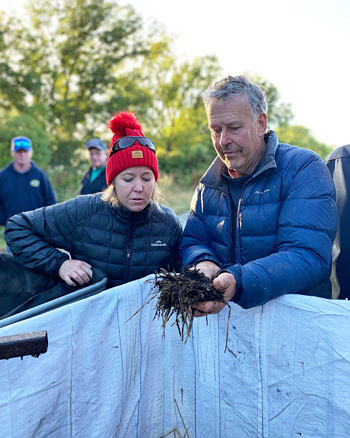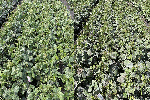New Zealand growers are achieving up to double the cereal yields as some Australian growers with similar rainfall. Wanting to know why, VicNoTill went on tour
When VicNoTill members discovered that New Zealand grain growers commonly achieved double the cereal yields of some of their members with the same rainfall, they wanted to find out more.
Higher-than-average rainfall in recent years has created new challenges for some Victorian and New South Wales members of VicNoTill, the grower-based, no-till, regenerative broadacre farming group. This includes greater disease pressure and waterlogged soils.
New Zealand receives between 700 and 1100 millimetres of annual rainfall. VicNoTill board member Brendan Pattison from Marrar, in NSW’s Riverina region, says his district average is 500 to 530mm. However, he has been receiving 600 to 800mm over the past few years. Higher-than-average summer rainfall has kept the profile wet.
“It’s widely known that in a dry environment, VicNoTill systems achieve a lot,” Mr Pattison says. “But in a wet year, we face new challenges. After a group of New Zealand farmers attended our 2023 conference, we heard they produced double what we are, depending on wheat varieties and other factors.”
With support from GRDC, VicNoTill took 19 broadacre and mixed growers to New Zealand’s South Island to visit the Canterbury, Southland and Otago regions. The tour included visits to farms, regenerative trial sites and value-adding grain businesses.
“We went on this study tour to learn more about how they achieved these big yields and dealt with the challenges of a wet season,” Mr Pattison says.
What’s different?
Environmentally, New Zealand has a longer growing season with a cool finish, allowing more time for the grain to fill out and produce a higher yield. On-farm, the use of European drying machines helps, too.
Mr Pattison says these machines allow growers to harvest in wetter environments, with some harvesting at up to 18 per cent moisture.
“Given that we keep getting rained on at harvest and getting grain downgraded, this is something that could be worth investing in. We could dry grain from 16 to 17 per cent moisture back to 12 per cent to deliver.”
High-input system
 Mallee grower Carol Fitzpatrick and New Zealand grower James Halford look at compost he is making on his farm. Photo: Supplied.
Mallee grower Carol Fitzpatrick and New Zealand grower James Halford look at compost he is making on his farm. Photo: Supplied.
One factor that stood out to VicNoTill members was the high level of inputs needed to maintain such a high-yielding system.
Added to this were financial pressures from rising land prices and small farm sizes, as well as strict requirements and regulations from agribusinesses. Mr Pattison says this drives New Zealand growers towards chasing the highest yields possible, even at the expense of sustainability and soil health.
“On one farm, in a conventional system, it costs $6000 a hectare to grow the crop. This is astronomical. It means they need to achieve 12 tonnes per hectare to break even.”
Many New Zealand growers are planting newer varieties, with up to five fungicide applications. The negative impacts on the soil are apparent, Mr Pattison says. “It was a good lesson to show what high usage was doing to the soil, with the longer-term damage to the farm being evident.”
Some growers they visited were tackling this issue. “They are doing what they can to reduce their fungicides and use more regenerative practices. On the farms that were more advanced in making these changes, the impacts were obvious, such as better soil aggregation and more life in the soil.”
The study tour was considered a valuable opportunity for the group’s members to broaden their perspectives and collect ideas for new approaches to grain growing.
“We are all trying to add diversity into our grain growing systems to benefit soil health, but the majority of farmers we visited were growing different crops in rotation whereas in Australia some of us are doing it via companions and multi-species,” Mr Pattison says.
“It was really interesting and gave us a different perspective to think about in terms of diverse options for grains in our farming systems.”
More information: vicnotill.com.au, email manager@vicnotill.com.au; GRDC Sponsorships.

























































